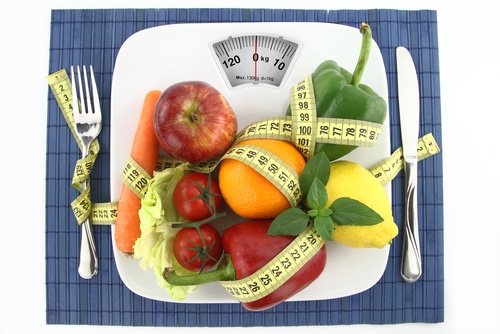
Good Carbs Are High in Fiber
One characteristic of good carbs is they’re high in fiber. Fiber helps to slow down the absorption of carbohydrates, so they enter the bloodstream in a more controlled manner. This reduces insulin spikes that contribute to fat storage. In addition, the extra fiber in healthy carbohydrate sources helps to fill you up faster so you’re less likely to overeat. In contrast, carbs that lack fiber are rapidly absorbed and cause blood sugar and insulin spikes. Instead of satisfying your hunger, rapidly-absorbed carbs, and the resulting insulin spike they cause leave you less full, so you’re more likely to reach for a cookie a few hours later.
Good Carbohydrates Have a Higher Nutrient Content
Compare a bowl of broccoli to a serving of white rice. With the broccoli, you get a wealth of vitamins, minerals, and natural phytochemicals that offer extra protection against heart disease and cancer. You also get heart-healthy fiber. With the white rice, you get a processed grain that’s stripped of most of its fiber and nutrients. Not only does white rice raise your insulin levels more rapidly than vegetables like broccoli, but you also get little nutritional value when you eat it.
A recent study showed that every 5.5 ounce serving of rice a person eats raises their risk of type 2 diabetes 10 percent. Make your carbohydrates count from a nutritional standpoint by choosing nutrient-rich vegetables, nuts, and legumes that are high in vitamins, minerals, and fiber. When you eat bread or grains, choose whole grain bread and unprocessed grains like quinoa, barley, and brown rice.
They’re Low Glycemic
A food’s glycemic index is a measure of the effect carbohydrates have on blood sugar levels. Foods that have a high glycemic index are absorbed rapidly and cause a greater insulin response than foods lower on the glycemic scale. In reality, a food’s glycemic-load is a more important measure of how healthy a carb is since it also takes into account how much carbohydrate the food contains.
It isn’t really necessary to know a food’s glycemic index or load to choose a healthy carb. Lots of things can affect these values like how food is cooked and what a particular food is eaten with. For example, a high-glycemic food will be more slowly absorbed when combined with a food high in protein or fiber. Instead of choosing carbs based on glycemic index or load, choose them based on how much fiber they contain. Foods high in fiber should have lower glycemic values.
More Guidelines for Choosing a Healthy Carbohydrate
Avoid processed and packaged foods as much as possible to limit bad carbs in your diet. Most processed fibers have less fiber and are less nutritious. Replace white rice and potatoes with veggie side dishes, and choose 100% whole wheat or whole grain bread. The first ingredient should be a whole grain. Don’t sip your carbs either. Soft drinks, fruit juice, and other sweetened beverages rapidly raise blood sugar levels and cause insulin spikes because they lack fiber.
The Bottom Line?
You need carbs in your diet to serve as an energy source. The key is to choose them wisely. Make high-fiber carbs that are high in nutrition a part of your diet, and cut back on processed carbs, white potatoes, white bread, pasta, white rice, and sugary beverages.
References:
Catholic Online. “White rice is bad for you — what next?
Mayo Clinic. “Glycemic Index Diet: What’s Behind the Claims?”
Related Articles By Cathe:
3 Reasons You Need Healthy Carbs if You Work Out
5 Reasons You Need Carbohydrates after a Workout
Do Refined Carbohydrates Trigger Overeating?
Fueling Exercise: 5 Factors That Determine Whether You Burn Fat or Carbohydrates
Beyond Protein: the Anabolic Effects of Carbohydrates
Carbohydrates and Protein-Sparing: How Important Are Carbs for Muscle Growth and Maintenance?
Obesity and Carbohydrates: Do Some Obese People Digest Carbohydrates Differently?

